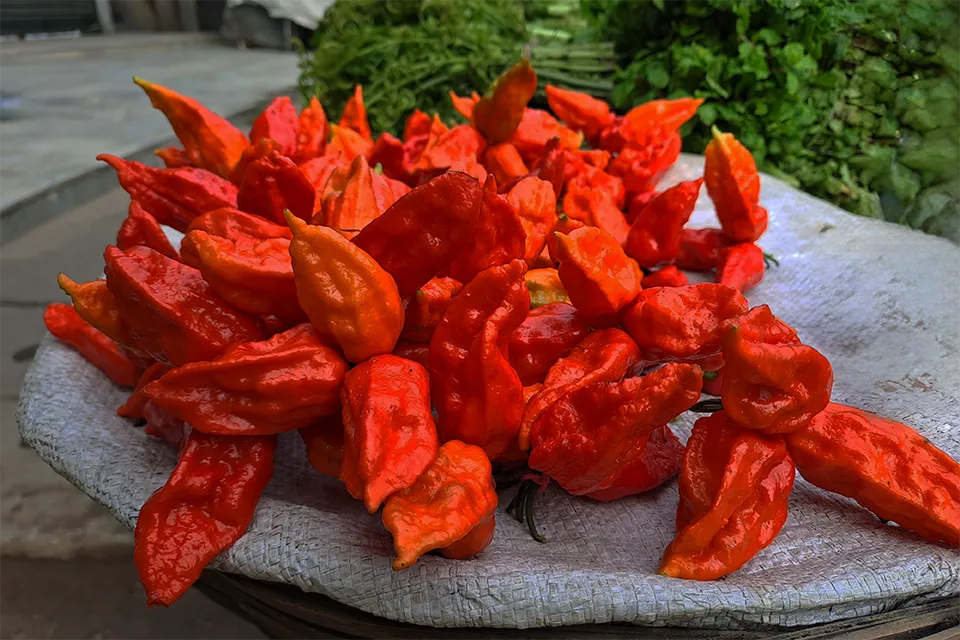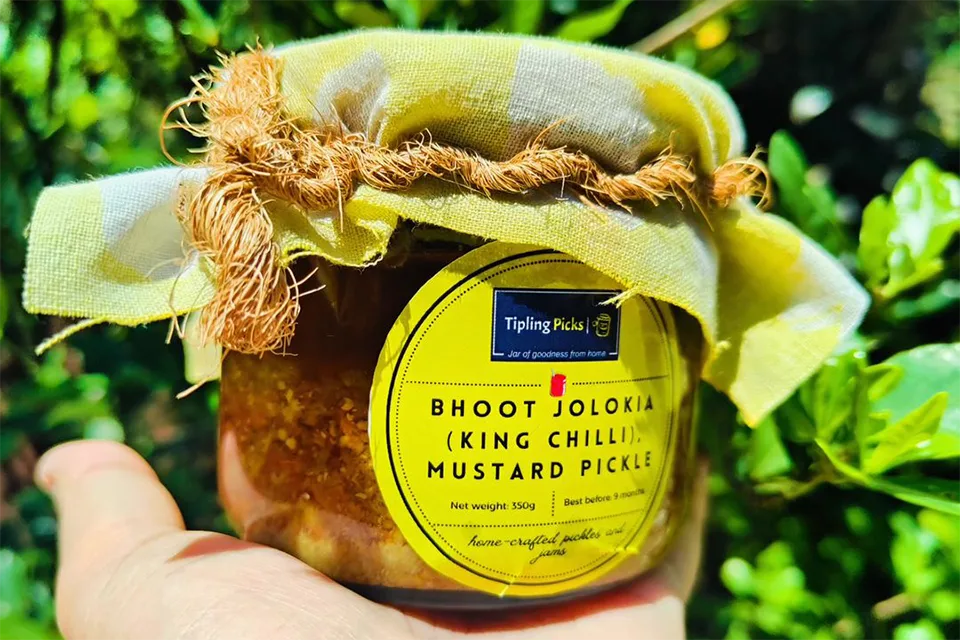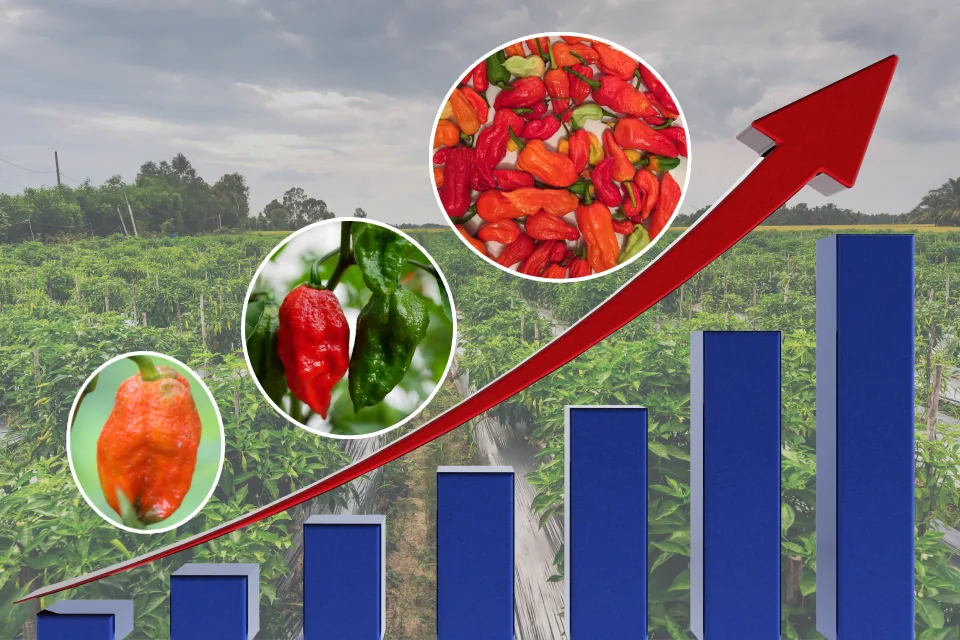Know some spicy facts about Bhut jolokia from Assam, one of the hottest peppers in the world and it’s growing popularity worldwide.
Updated on :
Share this post
Are you also someone who cannot complete their meal without some burning sensation of spice and flavors? Then you must have heard of Assam’s very famous Bhut jolokia or commonly called King chilli or Ghost pepper.

But what is so unique about these chilis and how you can try them with your favorite dishes, let me take you on this spicy ride. Bhut jolokia is one of the hottest chilis in the world. In 2007, the Guinness Book of World Records declared ghost pepper to be the hottest pepper in the world. For those who enjoy really spicy food, Bhut jolokia is more than simply a regular ingredient in recipes—it’s a journey.
Its unique characteristics
Bhut Jolokia is only grown in northeastern India, specifically in Assam and Nagaland. It is grown nowhere else in the world. It has long been a component of food and medicine utilized by the local population. It appears medium in size, measuring around 2 to 3 inches in length, and shaped like a little bell or lantern. Its color journey is very interesting unlike other peppers.
It begins as a vivid green and matures into orange, red, and sometimes even turns into deep brown. Bhut Jolokia begins as any other pepper but differs from other varieties of chilies due to its color change. Do you know because of its intense heat, Indian villagers apply it to walls and fences as a barrier to wild elephants. Isn’t that interesting!
Also read: Assam’s Ghost Pepper Export Making Global Waves
Culinary Uses
Bhut jolokia are more than just spicy chilies. In fact, it helps in balancing the taste composition of the dish. Many Assamese dishes are incomplete without a touch of Bhut jolokia. Be it pitikas (mashed vegetables), chutneys or pickles.

Talking about pickles, Assam’s Bhut jolokia pickle is famous all around the globe and we enjoy it here in every household. Must say Assamese people share quite a spice tolerance. Globally, chefs are intrigued by Bhut Jolokia, despite its origins.
They try to incorporate it into several dishes as its spiciness complements food without overpowering it. It’s used to give everything an extra boost, from chocolates and drinks to spicy curries and sizzling salsas. Added to marinades and hot sauces to make regular meals even more flavorful.
Health Benefits
Along with adding spice and flavor to dishes, ghost pepper is also proved to provide several health benefits which we Assamese people have been relying on since years. It has been incorporated into traditional medicine for a long time. Rich in Vitamin C, this spicy sensation can boost up your immunity and also your skin health.
The antioxidants in peppers fight free radicals within the body which leads to better immunity. It is believed to relieve congestion by increasing sweating and also stimulates digestion. They are also known to provide relief from frequent headaches and migraines. There may also be anti-arthritic properties to this chili.
In Assam, a paste made up of Bhut jolokia, garlic, ginger, betel nut leaf, sesame, is prepared, heated and directly placed to joints. The Capsaicin present in the pepper reduces cholesterol levels and has the ability to dissolve blood clots, improving heart health as well. Basically Hot, spice and everything nice!
Popularity
People who love super spicy stuff love it to bits. You’d see social media flooded with challenges about people consuming it. These competitions include “How many Bhut Jolokia Chilies can you eat in a minute”, “How many spoons of Bhut Jolokia chilli powder you can eat without drinking milk”, and many more!
Not only that but there are events held at the Hornbill Festival in Nagaland where participants must attempt to consume Bhut jolokia with milk powder. Emergency vehicles are stationed nearby to transport competitors to a hospital for stomach washing.
Quite recently, around fourteen students in Tokyo were hospitalized after eating super spicy potato chips made with Bhut jolokia. Now isn’t that some terrifying news but that doesn’t stop the mass from pushing themselves to try it and the popularity remains constant.
Bhut Jolokia isn’t only a hot pepper; it’s part of the culture and history of Assam. It shows how something as simple as a pepper can mean a lot to people and our traditions. The Ghost Pepper is a cultural icon.

